Caldey Island, Tenby, South Wales
PILGRIMAGE UK: HOLY PLACES

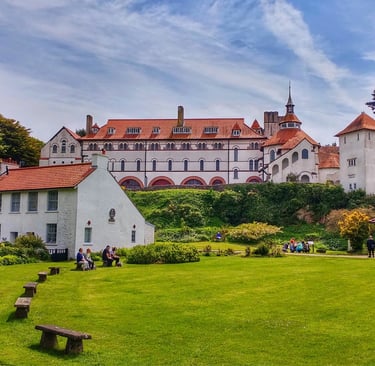
Caldey Island, situated off the coast of South Wales, emerges as a haven of spiritual retreat and quiet contemplation—a place where the ever-changing tides meet the timeless devotion embodied within its church and monastery. For those who journey to Caldey, the very act of travelling by boat across its coastal waters becomes a powerful symbol in its own right. The passage over the restless sea, a journey both physical and metaphorical, evokes traditional Christian stories of spiritual renewal and rebirth, reflecting how one may leave behind the familiar and immerse oneself in a sanctified space dedicated to divine contemplation.
On reaching the island, the visitor is immediately struck by its serene isolation. The gentle lapping of the waves at the shore, the subtle scent of salt carried on the breeze, and the steady rhythm of the tides all seem to herald the presence of a sacred mystery. As the boat touches the shore, one is reminded of the biblical journeys by water—an echo of the story of baptism, where water is more than mere liquid; it becomes a conduit to the cleansing of the soul and a tangible expression of God’s grace. Such a journey, from the busy mainland into the quiet embrace of the island, mirrors the spiritual progression of separating oneself from the clamor of everyday life and stepping into a retreat where God is encountered with clarity.
Upon entering the precincts of the monastery and church on Caldey Island, a visitor finds that the built environment harmonises with the natural beauty of its surroundings. The monastery, with its imposing yet gracefully simple architectural lines, stands as a testament to the enduring desire for solitude and prayer that has characterised Christian monastic life for centuries. The church, modest yet dignified, offers a space where centuries of liturgy echo in its stone corridors. Visitors discover that every element of the complex has been crafted not merely to accommodate the faithful, but to inspire a deeper communion with the divine.
The history of Caldey Island’s monastic presence is both rich and multifaceted. The island has long been a centre of Christian reflection, with its origins tracing back to Celtic monasticism and later being revived by more modern monastic communities. Over the years, various groups have sought to establish a contemplative life on the island, driven by the intense call of isolation away from the distractions of the world. This storied past is evident in the worn stone walls of the church and the measured steps of the monastery, which speak of a legacy wherein every carved detail and every piece of ancient craft serves as a visual catechism—a visible manifestation of faith through the ages.
For the visitor, the journey from the boat to the monastery unfolds as a pilgrimage brimming with symbolic parallels. Just as the early Christians embarked on perilous journeys across uncertain seas in search of promised lands and spiritual refuge, so too does the passage to Caldey Island invite a metaphorical leap of faith. The boat, swaying gently upon the waves, becomes a vessel of transformation; it separates the traveller from the mundane concerns of daily life and ushers them into a space where contemplation and prayer become paramount. The crossing is not simply a means of transportation, but an integral part of the overall pilgrimage—a physical enactment of the spiritual journey from darkness into light.
Once ashore, the quiet ambience of Caldey Island seems to wrap itself around the visitor, gently compelling an inward turn of the heart. The monastery’s cloistered paths, bordered by modest gardens and ancient trees, invite one to wander slowly and reflect on the passage of time. Here, even the simplest layouts—arched doorways, stone benches worn smooth by the visitations of countless monks—speak of a tradition that views the built environment as a living testimony to the Creator’s hand. The austerity of the monastery is not felt as cold or unwelcoming; rather, it is suffused with a serene beauty that encourages quiet meditation and personal prayer.
Within the church and monastery, one’s attention is drawn to a series of sacred artefacts and features that have survived the vicissitudes of history. Stained glass windows, though modest in scale, capture the refracted colours of the Welsh sunlight, casting intricate patterns upon the stone floor which change with the passing hours. Every curve of the arches, every carved motif, is a reminder of the belief that beauty is a pathway to divine truth—a notion echoed by many theologians who have long argued that the physical representation of sacred ideals can lead the soul to a deeper understanding of God. In these moments, the visitor may recall the words of a wise spiritual teacher, who once observed that every element of creation is a letter in the ongoing epistle from God to humanity.
The reflective journey on Caldey Island is not solely about the architectural marvels, but also about the living tradition of monastic life that continues to thrive there. The inhabitants of the monastery, cloistered and devoted, live out a schedule of prayer and contemplation that has remained remarkably consistent through the centuries. Their daily cycle, punctuated by the ringing of bells and the soft murmur of Gregorian chants, creates an atmosphere where stillness and introspection become not merely encouraged but required. Visitors are often invited to observe, or even join in brief moments of prayer, transforming the experience into a collective act of worship that spans time and space.
Parallels between the journey to the monastery and significant Christian narratives abound. The pilgrimage by boat recalls the ancient symbolism of water as a means of rebirth and renewal. In the same way that Jesus was baptised as a public declaration of his new life, travellers stepping off the boat onto the island might be seen as embarking upon their own cleansing journey—a chance to leave behind past burdens and to begin anew in a sacred, isolated locale. Moreover, the very act of arriving on an island, detached from the mainland, resonates with the Christian call to retreat from the distractions of the world and to enter into a state of contemplative solitude where one can commune with the divine.
Throughout the day, as the visitor wanders among the cloisters and silent halls, a profound realisation takes hold: that the pilgrimage to Caldey Island is both an external voyage and an inner journey. Each step along the weathered paths, every moment spent reflecting in the quiet of the monastery, contributes to an evolving narrative of spiritual transformation. The experience of Caldey is not reduced solely to a collection of physical sites, but becomes a holistic retreat in which history, nature, and enduring faith converge. Every pebble on the path, every ripple on the water’s surface, bears witness to an ongoing dialogue between the temporal and the eternal.
In the stillness of the island, the legacy of early Celtic saints and the later monastic revival merge into a single, unfolding story—one that invites the visitor to embrace a life of reflection, prayer, and contemplation. The journey by boat, in its own ritualised way, sets the tone for the pilgrimage: a deliberate step away from worldly distractions and towards a space where the presence of God is felt with intensity and clarity. The monastery, with its quiet corridors and measured rhythm, offers a sacred counterpoint to the rush of modern existence, much as the biblical narratives of retreat and renewal offer hope to those inclined to listen.
As the day draws to a close, and the visitor prepares to depart Caldey Island, there remains an enduring sense of having been touched by a profound spiritual mystery. The journey—both by boat across the gentle, lapping waves and on foot through centuries-old stone—has left a lasting impression. It is a pilgrimage that affirms the timeless truth that sacred encounters are not confined to the grand sanctuaries of cities, but are equally accessible in remote, sunlit corners of our world.
In essence, Caldey Island, with its church and monastery, stands as a beacon of spiritual calm and transformation in South Wales. The journey to the island, replete with symbolic echoes of Christian narratives and the promise of renewal, offers each traveller an opportunity to experience the sacred in an intimate and enduring way. Moreover, the interplay of history, natural beauty, and a living tradition of monastic life reinforces the eternal lesson that even in the isolation of a small island, the divine is manifest in every ripple of the sea, every ancient stone, and every whispered prayer.
A Pilgrimage by Sea and Stone: A Reflection on Caldey Island and Its Sacred Monastery
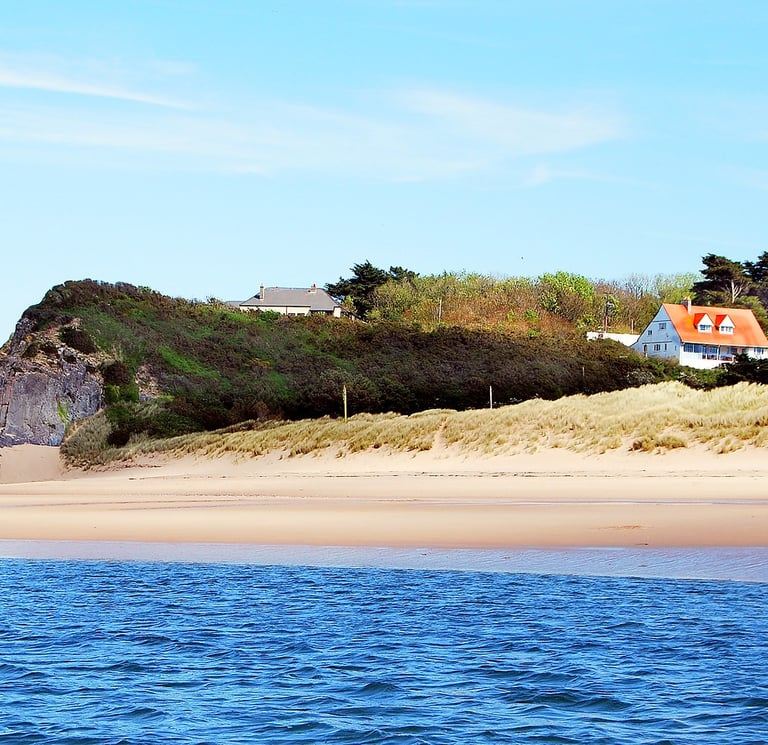

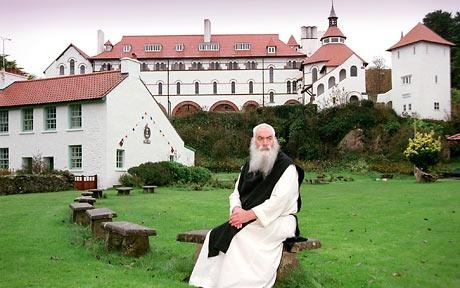

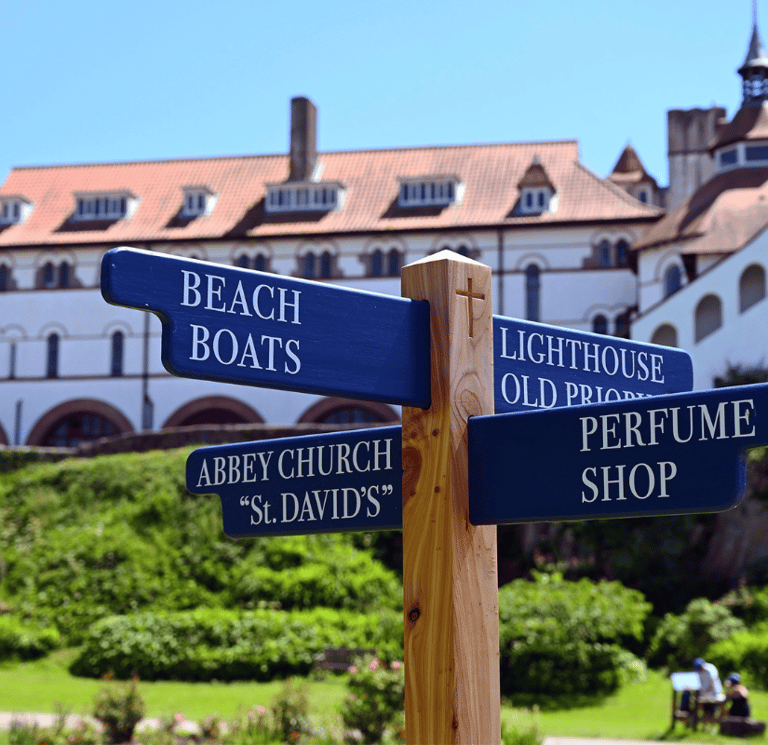

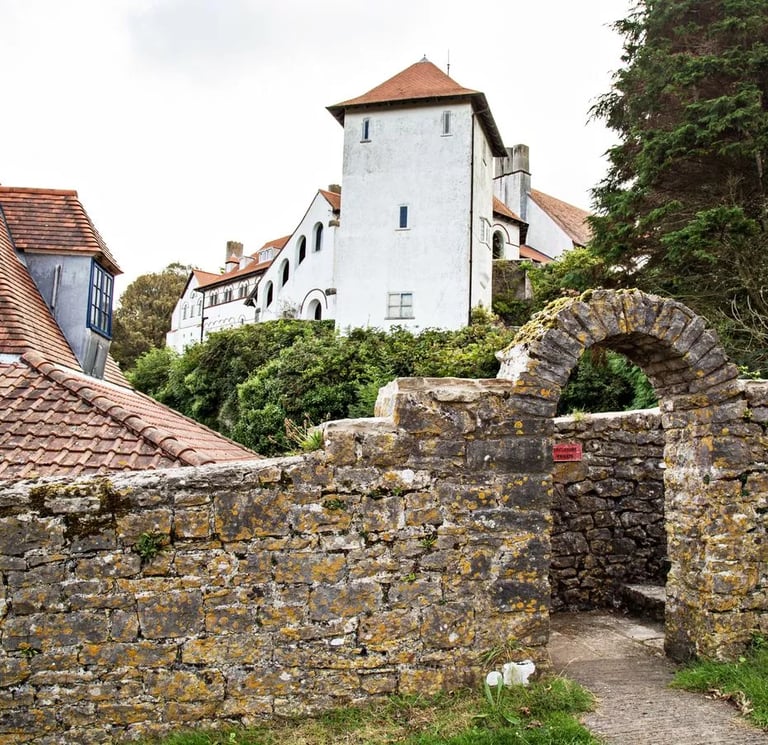

Ancient Apostolic Catholic Church
Embracing faith, inclusion, and compassionate service together.
ST THOMAS AQUINAS SEMINARY
© 2025. All rights reserved
QUICK LINKS
